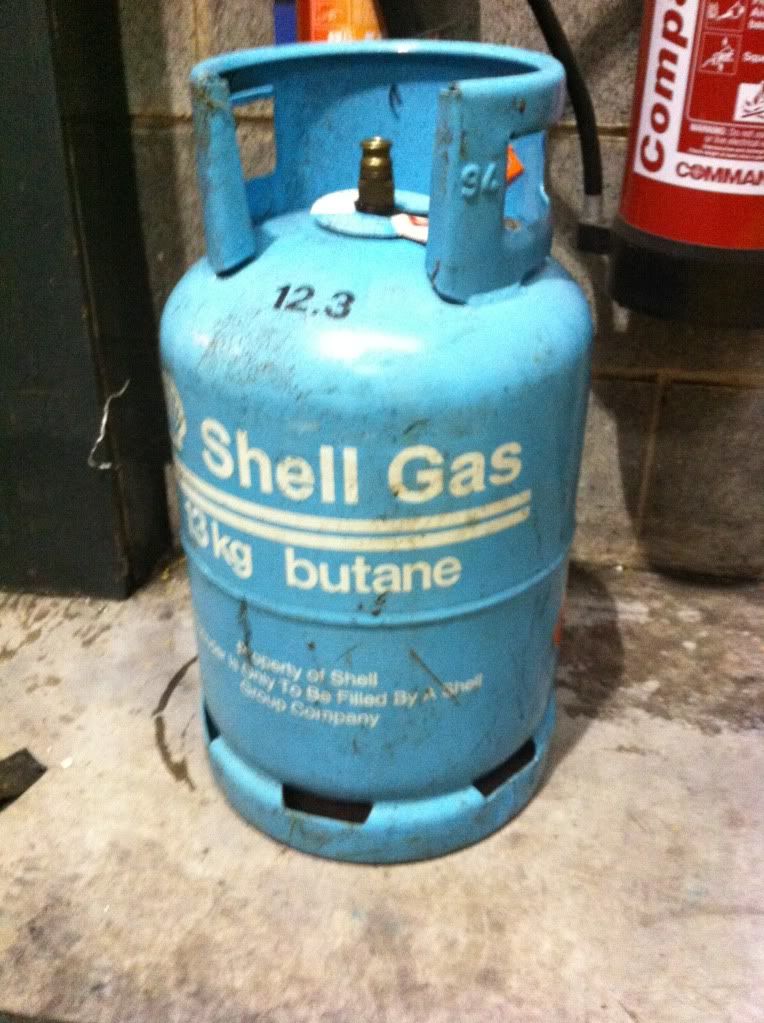That's a 13kg (Butane) cylinder, with a 20 or 21 mm valve for use with the likes of portable gas heaters, barbecues and the like. The chances are, the black stickers '12.3' on the front refers to the tare weight of the bottle, whilst the embossed '94' shows the year of manufacture. My first job out of uni was for Flogas, helping them get their cylinder refurbishment plant up and running, and the 13kg's were the first to be re-branded. Needless to say, there are so many out there, they still haven't painted them all!!
I'd strongly recommend you return it to the nearest depot for an exchange (if required). The bottle, despite being labelled as Shell, is owned by Flogas and still has another two years life left in it before it is re-valved, tested and recorded (although none of the gas companies have an inventory of every cylinder in existence, so an 'alternative' use of the cylinder may not raise suspicions, should you decide to go down the routes suggested above


).


